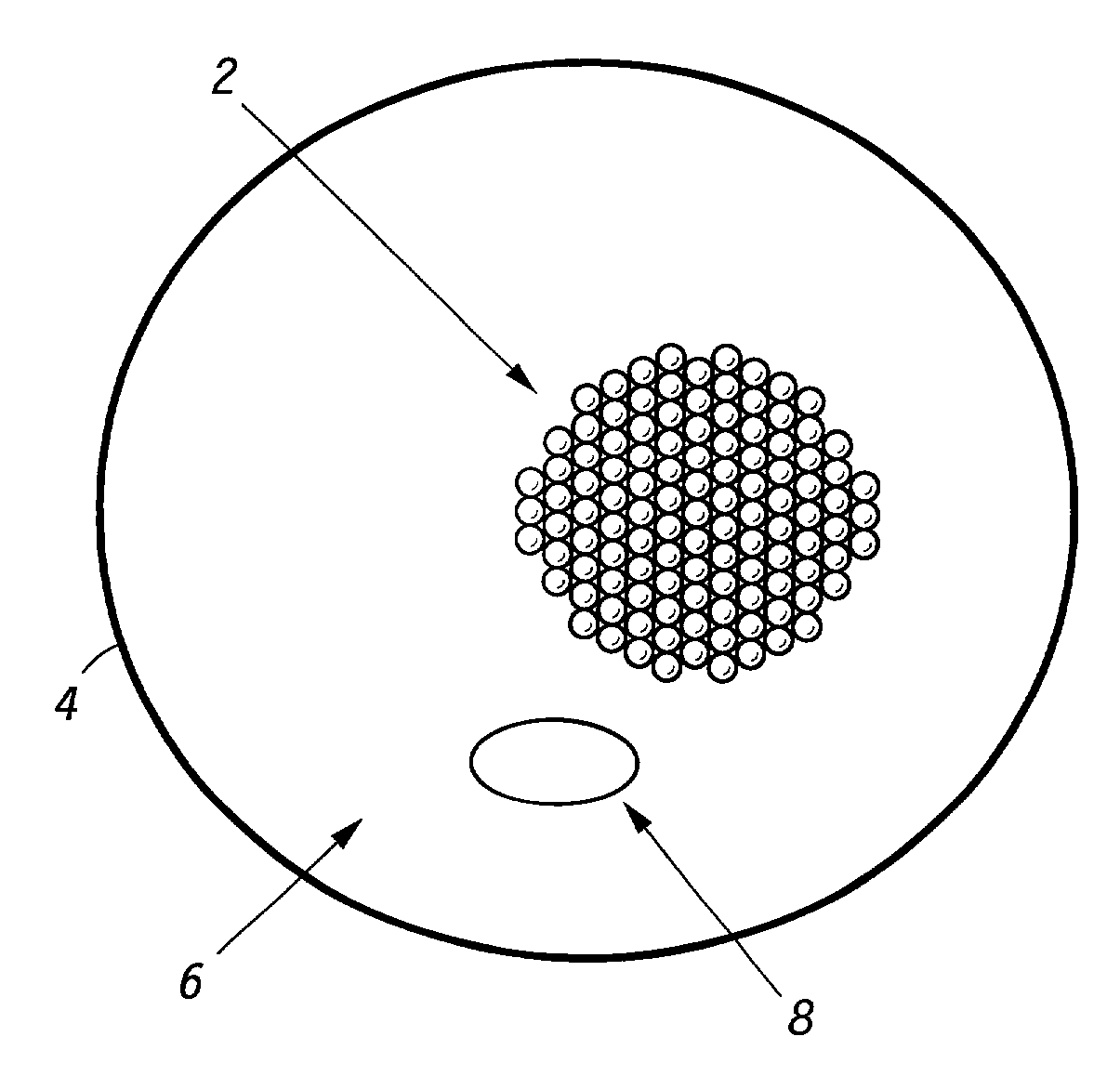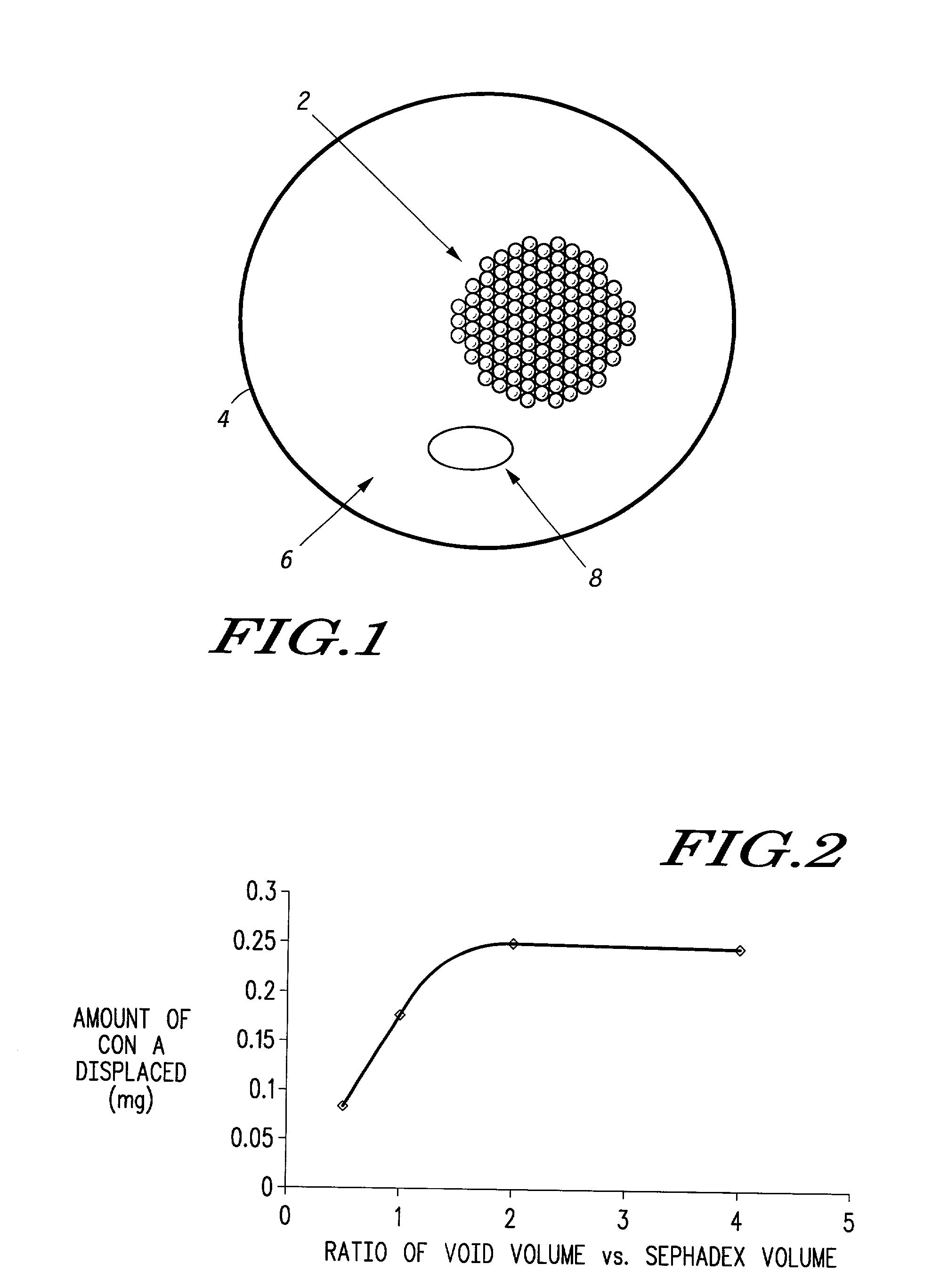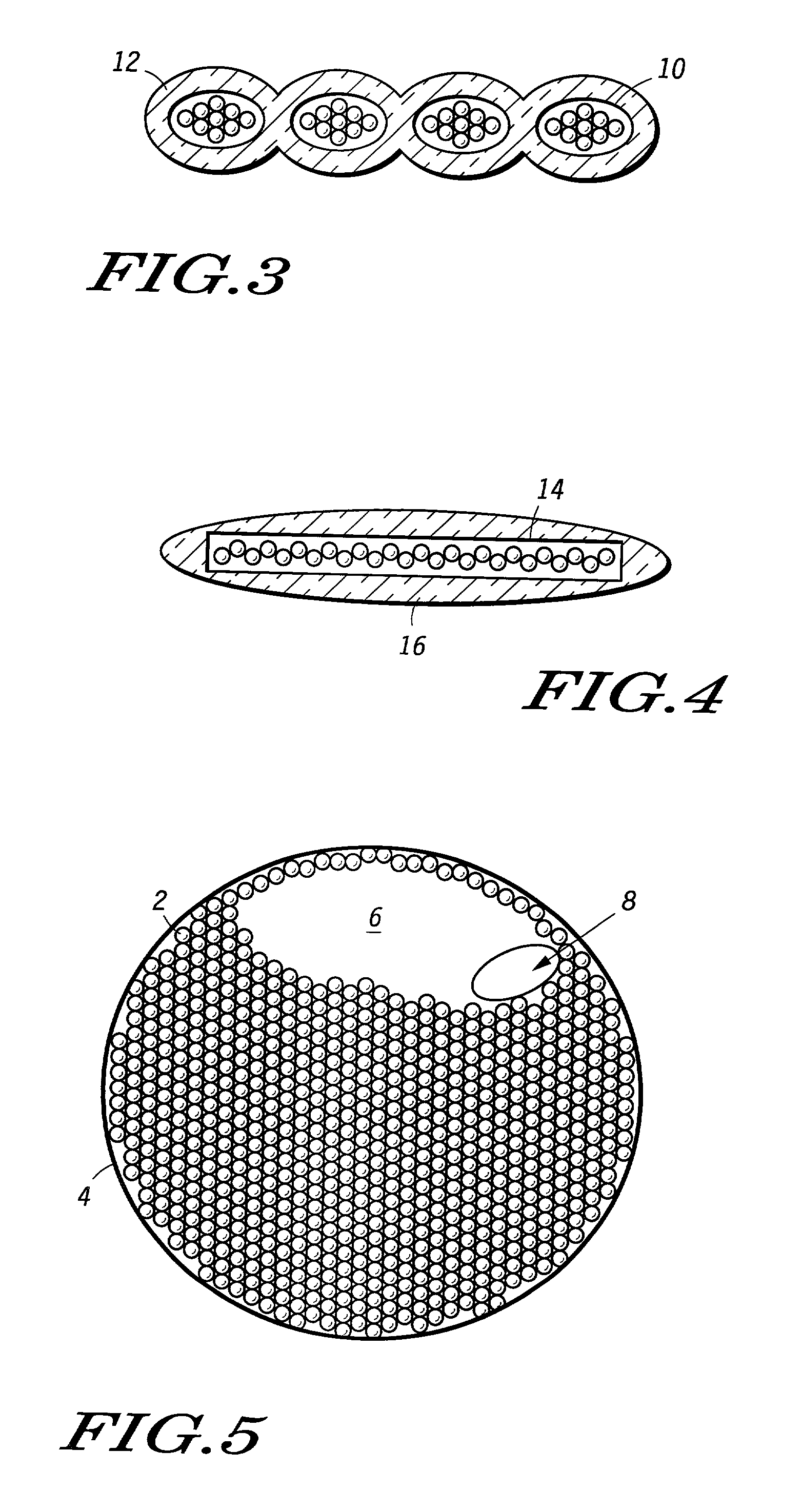Sensor device and methods for manufacture
a technology of analyte and sensor, which is applied in the direction of fluorescence/phosphorescence, instruments, and analysis using chemical indicators, etc., can solve the problems of increasing the probability of immunological response or infection, affecting the long-term usefulness of implantable sensors, and affecting the clinical outcome of patients with immunocompromised disorders. , to achieve the effect of strong resistance to rupture or leakage, small size and small siz
- Summary
- Abstract
- Description
- Claims
- Application Information
AI Technical Summary
Benefits of technology
Problems solved by technology
Method used
Image
Examples
example 1
Preparation of Cores with Dyed SEPHADEX Substrates and ALEXA633-Concanavalin-A Analogues
[0086]For the dyeing procedure the DVS-method previously described by Porath et al. (Porath, J.; Laas, T.; Janson, J.-C. J. Chromatography, 1975, 103, 49-62) was applied. SEPHADEX G200 beads were pre-swollen in 20 mL distilled water overnight. The beads were washed over a sieve with several volumes of distilled water. The bead suspension (12 mL) was then mixed with 12 mL of a 1 M sodium carbonate buffer solution (Na2CO3, pH 11.4) in a beaker. The suspension was intensively stirred on a magnetic stirrer for the duration of the procedure. DVS (800 μl) was added to the suspension and the reaction allowed to proceed for 1 hour. The beads were washed over a sieve with copious amounts of distilled water to remove non-bound DVS, and subsequently equilibrated with 0.5 M sodium hydrogen carbonate buffer (NaHCO3, pH 11.4). Alkali Blue 6B (30 mg) was dissolved in DMSO (1 mL). The res...
example 2
Preparation of Cores with Dyed SEPHAROSE-Concanavalin-A Substrates and Glucose Modified ALEXA633-albumin Analogues
[0088]SEPHAROSE beads were dyed with Alkali Blue 6B using the divinyl procedure described above except the SEPHADEX beads were replaced with SEPHAROSE beads.
Conjugation of Alkali Blue 6B / SEPHAROSE with Concanavalin-A Using periodate-oxidation
[0089]A suspension of 4 mL Alkali Blue-SEPHAROSE was washed in distilled water. Then 50 mg of NaIO4 dissolved in 1 mL of distilled water was slowly added to the suspension. The suspension was gently shaken and incubated for 60 minutes. The oxidation reaction was halted by adding 2 mL of 2 M ethylene glycol, followed by incubation for 30 min at room temperature. This activated SEPHAROSE suspension was washed several times with 10 mL of 0.01 M sodium carbonate buffer pH 9.2.
[0090]A Concanavalin-A solution was made by dissolving 100 mg of Concanavalin-A in 3 mL of a sodium carbonate buffer, containing 1 mM of ca...
example 3
Fabrication of Glucose Sensing Capsule by Manual Deposition
[0093]Sensor cores for the devices were fabricated as follows: 50 μL drops of a deionized water solution of (1) SEPHADEX (100 mg / mL) ALKALI BLUE 6B as the binding substrate, (2) ALEXA633-Concanavalin-A (0.5 mg / L) as the labeled analogue, and (3) polyethylene glycol (100 mg / mL) as the intermediate layer were dispensed on PARAFILM. After evaporation of water, the materials formed a core approximately 1 mm in diameter. At this point, the polyethylene glycol acts to bind together the SEPHADEX and ALEXA labeled Concanavalin-A to give the core mechanical integrity.
[0094]The cores were then coated in cellulose acetate by depositing 50 μL of a 100 mg / mL solution of cellulose acetate in acetone, drying for 2-3 minutes, and then depositing 50 μL of cellulose acetate on the opposite side of the core. The resulting capsules were placed in water for conditioning overnight. The process produces a cellulose acetate membrane that is 100 mic...
PUM
 Login to View More
Login to View More Abstract
Description
Claims
Application Information
 Login to View More
Login to View More - R&D
- Intellectual Property
- Life Sciences
- Materials
- Tech Scout
- Unparalleled Data Quality
- Higher Quality Content
- 60% Fewer Hallucinations
Browse by: Latest US Patents, China's latest patents, Technical Efficacy Thesaurus, Application Domain, Technology Topic, Popular Technical Reports.
© 2025 PatSnap. All rights reserved.Legal|Privacy policy|Modern Slavery Act Transparency Statement|Sitemap|About US| Contact US: help@patsnap.com



